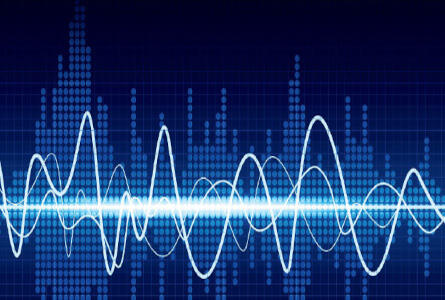How Active Harmonic Filters Work: Core Technology and Real-Time Response
Understanding the core mechanism behind active harmonic filter operation
Active harmonic filters keep an eye on electrical systems through current sensors, spotting those pesky waveform distortions that come from non-linear loads. These filters work differently than their passive counterparts. Instead of just sitting there doing nothing, they actually create compensating currents using these fancy things called insulated-gate bipolar transistor inverters, commonly known as IGBTs. The system adjusts itself as conditions change, which means it doesn't need all those old school fixed-tuned reactors or capacitors anymore. What does this mean for real world applications? Well, it allows for a much wider range of frequencies to be handled properly, and the performance adapts nicely even when load conditions fluctuate throughout the day.
Harmonic detection and real-time compensation process
Modern sensors pick up harmonic information in around 50 microseconds and send this data over to the main processing unit. The system then runs some pretty sophisticated calculations to figure out both how strong these harmonics are and what their phase angles look like. What happens next is really fast stuff - somewhere between 1 and 2 milliseconds later, the equipment actually puts out opposite currents that cancel out any unwanted distortions before they can spread through the network. This quick reaction time means everything stays within the limits set by IEEE 519-2022 regulations. Facilities that run things like variable speed motors or industrial arc furnaces will find that total harmonic distortion stays under 5%, which is exactly where it needs to be for proper operation.
Inverse current injection for precise harmonic cancellation
The power electronics within the filter generate what we call cancellation currents these match the harmonic frequencies but flip their polarity completely. Take for instance a typical scenario where there's a 150 Hz fifth harmonic disturbance the system counters this with another current at exactly the same frequency (also 150 Hz) but running 180 degrees out of phase. What makes this approach effective is how it keeps the main 50 or 60 Hz power signal intact while knocking out most of those pesky harmonics. Tests conducted last year showed results were impressive too about 98 percent reduction in unwanted harmonic content according to Fourier analysis from recent power quality studies.
Role of digital signal processors in enabling adaptive filtering
Digital signal processors or DSPs for short can sample electrical grid conditions over a million times every single second while keeping track of those pesky harmonic shifts as they happen. Inside these devices are smart algorithms that actually learn what's going on with the harmonics patterns caused by things like CNC machinery or backup power supplies, then tweak the compensation settings before problems even occur. Real world testing has demonstrated that filters powered by DSP technology keep total harmonic distortion under 3 percent when there are sudden changes in electrical load. That beats out traditional passive systems hands down since their THD measurements tend to jump up between 8 and 12 percent when faced with the same kind of stress situations.
Superior Performance: Active vs. Passive Harmonic Filters in Industrial Applications
Total harmonic distortion (THD) reduction: active filters achieve under 5%
Active harmonic filters consistently reduce total harmonic distortion (THD) to below 5%, surpassing passive solutions that typically stabilize only between 15-20% THD in comparable environments (Ponemon 2023). This precision minimizes electrical noise and prevents malfunctions in sensitive automation systems, making active filters essential in modern industrial and commercial power networks.
Adaptability to varying harmonic profiles in dynamic systems
Factories that deal with changing workloads need solutions that can keep up. Think about places running variable frequency drives (VFDs) or bringing renewable energy into their systems. These environments demand some kind of smart mitigation strategy. Active filters work by using digital signal processing in real time to tweak their compensation as needed. They can handle harmonics all the way up to the 50th order which is pretty impressive. According to research published last year on industrial power quality, these active filters react about 92 percent quicker than traditional passive ones when there's a sudden shift in load. This means better stability for the whole power system during those unpredictable moments.
When passive filters may still be viable: limitations and exceptions
For smaller setups where harmonics stay pretty steady, passive filters still offer good value money-wise, especially in things like motors that run at constant speeds. The problem comes when these filters can't handle those tricky interharmonics or deal with shifts in frequency. And let's not forget about all those unpredictable load changes either. According to Ponemon research from last year, these issues actually cause around 38 percent of power problems in factories. Another big issue is how easily they get caught in resonance problems too. That's why many newer facilities with rapidly changing loads tend to look elsewhere for solutions instead of relying on passive filtering alone.
Data insight: Average THD reduction from 28% to below 5% with active harmonic filters
Industry measurements confirm that active harmonic filters reduce average THD from 28% to under 5% in industrial plants. This improvement translates to approximately $120,000 in annual savings from reduced energy waste and unplanned downtime for mid-sized facilities, with performance maintained even during load swings exceeding 300% of nominal capacity.
Key Applications of Active Harmonic Filters in Modern Power Systems
Protecting Sensitive Equipment in UPS-Powered Data Centers
Data centers that depend on uninterruptible power supplies (UPS) face serious issues when there's even a small amount of harmonic distortion affecting server operations. Active harmonic filters work by suppressing those annoying disruptive frequencies, keeping total harmonic distortion (THD) under control at around 3%, which matches what the latest Power Quality Report suggested for 2024. These filters do more than just clean up electrical signals though. They actually help prolong equipment life across the board. Network switches last longer, storage systems stay healthy, and the whole power distribution setup experiences less wear and tear because insulation materials aren't stressed as much and components run cooler overall.
Enhancing Efficiency and Reliability in VFD-Driven Industrial Systems
When variable frequency drives (VFDs) adjust motor speeds, they tend to create quite a bit of harmonic current as part of the process. These unwanted electrical disturbances can really mess things up for industrial equipment. That's where active filters come into play. They help clean up those distortions and actually cut down on transformer losses somewhere around 22% in places like conveyor belts and computer numerical control (CNC) machines. Take a look at what happened at one particular steel mill after installing these filters. Energy bills went down by about 18%, which isn't bad considering how expensive power can get in manufacturing. Plus, there were fewer false alarms from protective relays that kept interrupting operations. So not only does it save money, but it also means less downtime and smoother day-to-day running of the facility.
Growing Adoption in HVAC, Elevators, and Motor Drives
High rise buildings these days are starting to install active harmonic filters for their HVAC compressors and those regenerative elevator systems. The main reason? These filters stop harmonic resonance from happening in variable speed circuits something that used to cause all sorts of problems like cables getting too hot or capacitors blowing out. Some recent studies on smart buildings show around a 25-30% drop in maintenance calls once these filters get installed. Makes sense when looking at long term costs too since fewer breakdowns means less downtime and repair expenses over time. For property managers concerned about sustainability and keeping operating costs down, this technology is becoming pretty essential.
Power Quality and Long-Term Operational Benefits of Active Harmonic Filters
Voltage Stabilization and Elimination of Waveform Distortion
By canceling dominant harmonic frequencies, active filters stabilize voltage within ±1% of nominal levels in 96% of industrial installations (EPRI 2023). They specifically target 5th and 7th order harmonics-the most common sources of waveform distortion-preventing resonance issues associated with passive solutions and ensuring equipment operates within design parameters.
Improving System Reliability and Minimizing Unplanned Downtime
When companies tackle harmonic problems in their electrical systems, they see real benefits. Mechanical stress drops significantly, which means motors vibrate less and transformers don't buzz as loudly – somewhere between 40% to almost two thirds reduction according to industry measurements. Take a look at facilities that have installed active filters for power conditioning. One major energy provider reported nearly 60% fewer interruptions caused by poor power quality back in 2022. For industries where even minor electrical fluctuations matter, this kind of stability makes all the difference. Semiconductor manufacturers know this well since just one unexpected voltage spike during production can wipe out hundreds of thousands worth of raw materials sitting on clean room floors waiting to be processed.
Energy Savings and Power Factor Improvement Through Harmonic Mitigation
When installed correctly, active harmonic filters typically boost power factors above 0.97 in around 89 out of every 100 installations. This helps cut down on those pesky reactive power charges by roughly 18 percent in most cases. These devices work by getting rid of harmonic currents that basically waste electricity without doing anything useful for the system. As a result, conductors run more efficiently, with most sites seeing about 92% less harmonics messing things up. A recent study looked at 47 different manufacturing plants and found that after putting these filters in place, they saved anywhere from twelve thousand dollars up to as much as eighty-five grand each year across their operations.
Reducing Thermal Stress on Transformers and Cables to Extend Equipment Life
Eliminating harmonic-induced heating delivers measurable longevity gains:
- Transformer operating temperatures fall by 14–22°C
- Cable insulation lifespan increases 3–5 times
- Capacitor bank replacements drop by 73%
These improvements prevent the typical 11% annual efficiency loss seen in unfiltered systems, preserving asset integrity over time.
Long-Term ROI: Lower Maintenance Costs and Reduced Energy Consumption
Active harmonic filters offer a median payback period of 2.3 years (IEEE Transactions 2024), driven by:
- 33% lower annual maintenance compared to passive filters
- 8–15% reduction in kWh consumption
- 50% fewer required power quality audits
Over a decade, cumulative savings exceed initial investment by a 4:1 ratio in medium-voltage applications, establishing active filters as a strategic long-term asset.
FAQ
What is an active harmonic filter?
An active harmonic filter is a device used to eliminate disturbances caused by harmonics in electrical systems by injecting compensating currents to cancel out unwanted frequencies.
How does an active harmonic filter work?
It works by continuously monitoring the electrical load and generating opposite currents using insulated-gate bipolar transistors (IGBTs) to negate harmonic distortions.
Why choose active harmonic filters over passive ones?
Active filters offer superior adaptability and precision, effectively reducing total harmonic distortion to below 5%, compared to passive filters which can only stabilize between 15–20%.
What are the benefits of using active harmonic filters?
Active harmonic filters enhance system efficiency, prolong equipment life, reduce unplanned downtime, and facilitate significant energy savings and power factor improvement.
Are active harmonic filters suitable for all applications?
While active filters excel in dynamic and rapidly changing load environments, passive filters may still be beneficial for smaller setups with steady loads.
Table of Contents
- How Active Harmonic Filters Work: Core Technology and Real-Time Response
- Superior Performance: Active vs. Passive Harmonic Filters in Industrial Applications
- Key Applications of Active Harmonic Filters in Modern Power Systems
-
Power Quality and Long-Term Operational Benefits of Active Harmonic Filters
- Voltage Stabilization and Elimination of Waveform Distortion
- Improving System Reliability and Minimizing Unplanned Downtime
- Energy Savings and Power Factor Improvement Through Harmonic Mitigation
- Reducing Thermal Stress on Transformers and Cables to Extend Equipment Life
- Long-Term ROI: Lower Maintenance Costs and Reduced Energy Consumption
- FAQ

